Bathroom wall panelling ideas for every size of room
Give your space a distinct style with bathroom wall panelling ideas. From coastal wood designs to colourful paint choices, we've got all the options
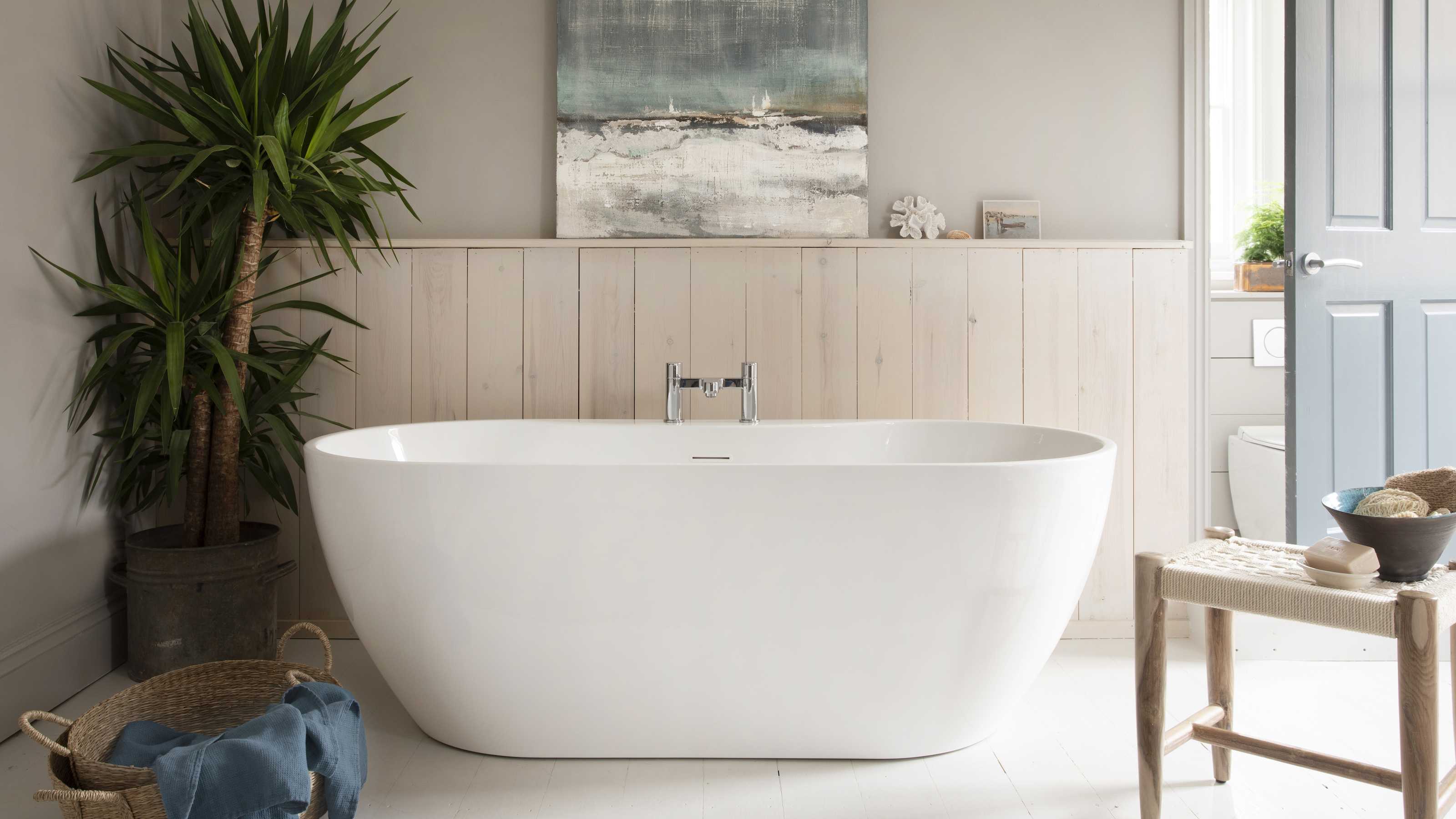
These bathroom wall panelling ideas will give you the tools and inspiration to create your own personality-filled room.
Wall panelling ideas can recreate popular and timeless styles, including rustic coastal timber cladding, contemporary slatted wood, and even large slabs of precious stones such as marble for a comfortable cost.
Decorating a bathroom in this way can be a budget-friendly way of updating a tired room, or can give your new space an individuality to newly-plastered walls.
Bathroom wall panelling ideas for a creative and interesting space
“The bathroom should be a place to relax and unwind, so it’s important to create an environment that not only looks appealing, but provides low-maintenance too," advises Helen Dennett, marketing manager at Mermaid Panels.
"Wall panelling is therefore a great solution, as there are options to suit traditional, minimalist, and contemporary styles, while at the same time removing the need for unsightly grouting – making them easy to clean."
1. Use wall panelling to make a small bathroom light and bright
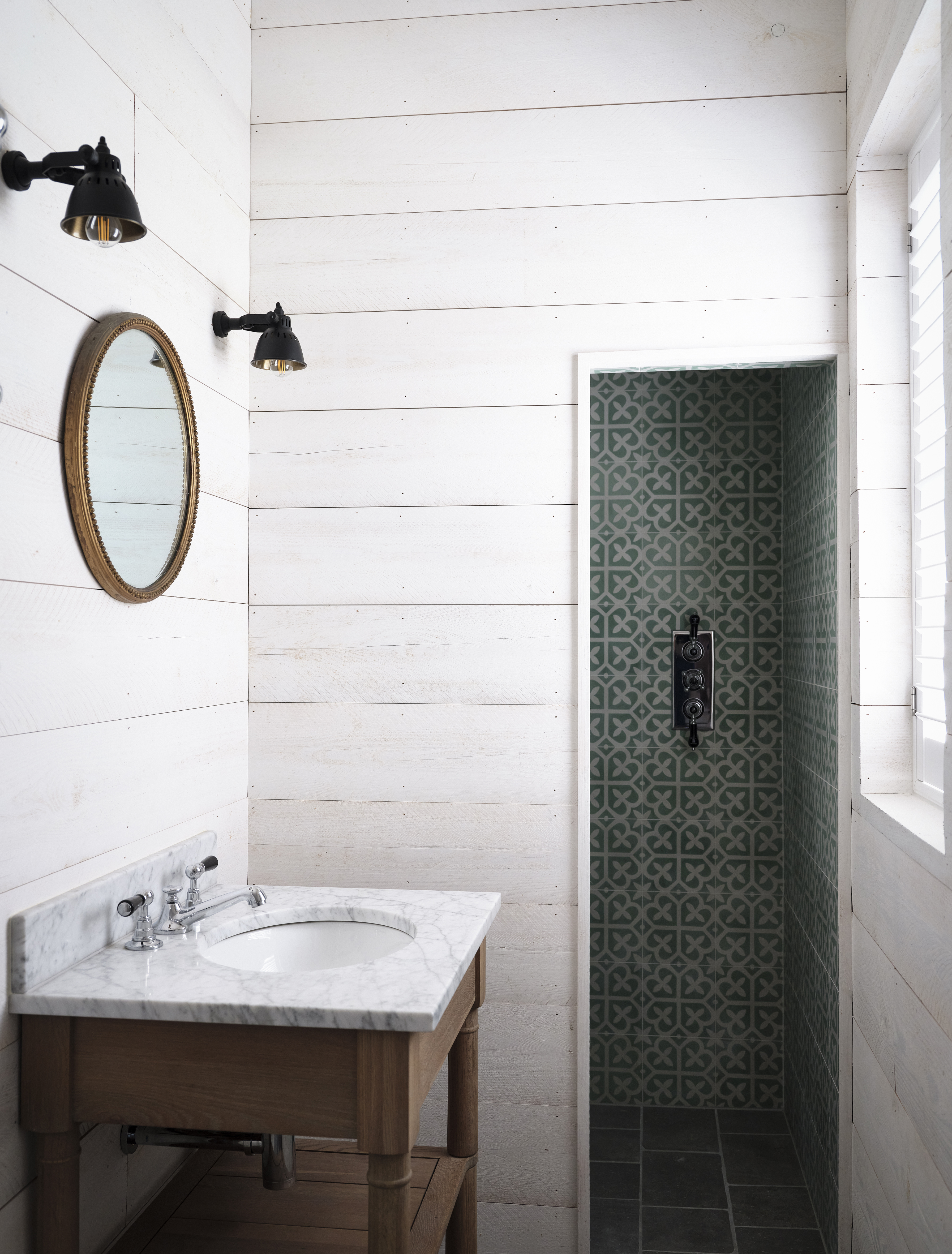
Create an interesting and characterful small bathroom by using white-washed rustic cladding on every wall.
This style works particularly well in rooms with tall ceilings, but if your space is a little squat, consider rotating the timber panels 90º and laying them vertically.
Although petite, this en suite is gorgeously bright and welcoming — and is contrasted by the colourful, patterned tiles inside the shower.
2. Give an old bathroom an complete (budget-friendly) makeover
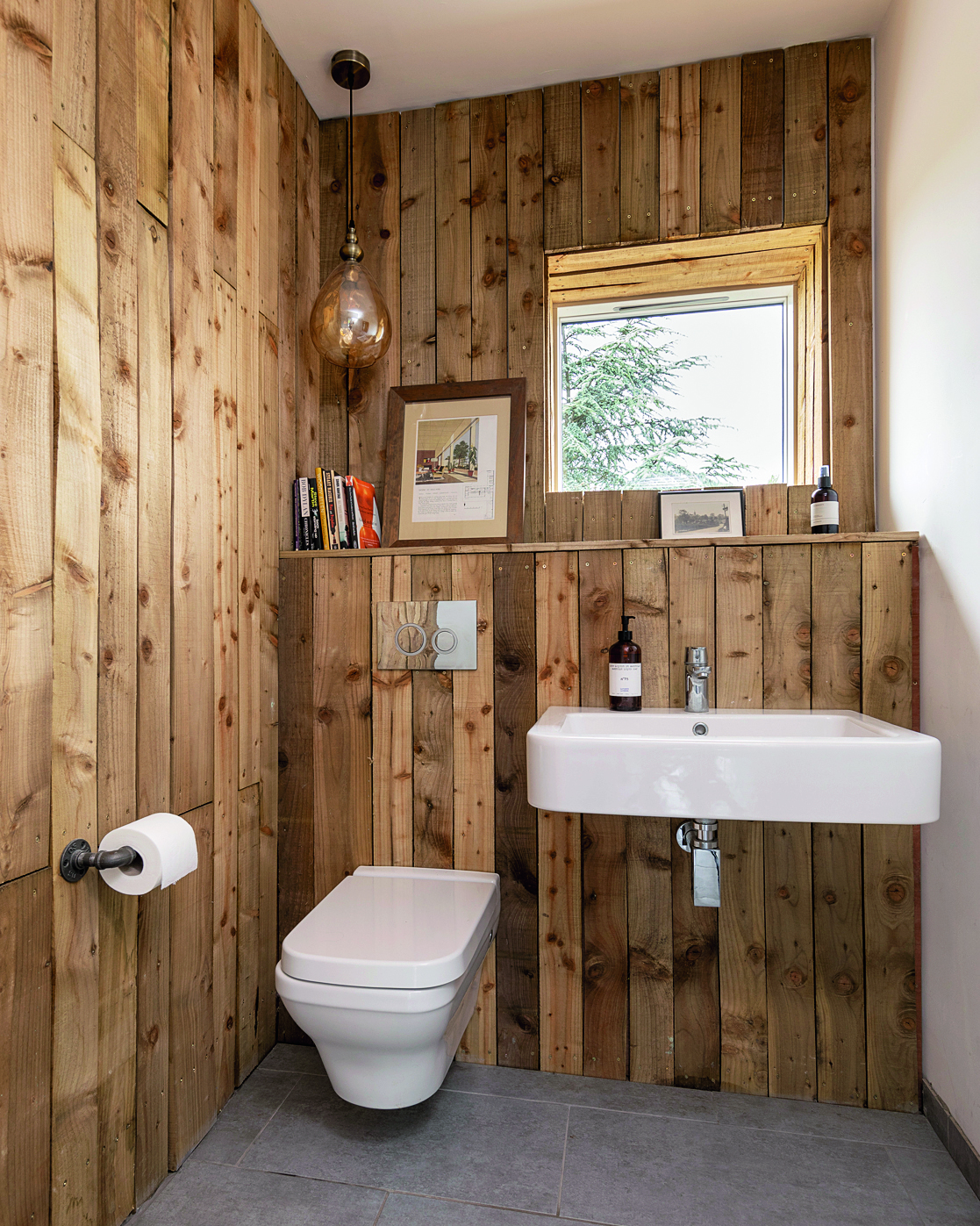
Cladding bathroom walls with tongue and groove timber DIY wall panelling is a fantastic way to give a dated bathroom (or downstairs cloakroom, as here) a refresh.
Older bathrooms can suffer from showing signs of wear and tear on the plasterwork. Dents, holes and cracks all appear over time so as long as they're not serious, covering them over can be a cost-effective option rather than getting the room reskimmed.
3. Create a handy shelf using bathroom wall panelling
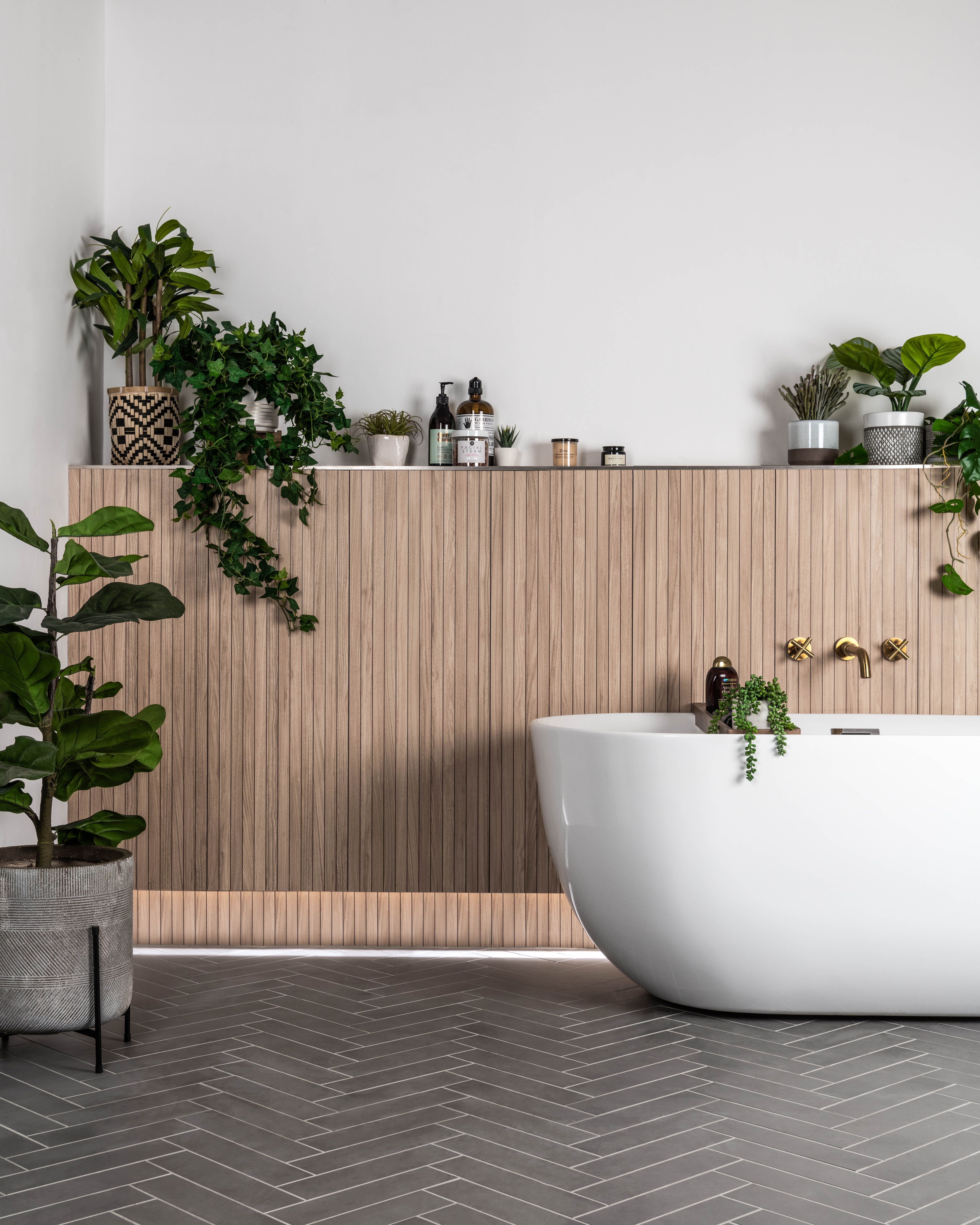
Panelling just half way up the wall (known as wainscotting) is a great opportunity to box in pipes and insulation as well as creating a stylish and handy shelf for candles, bottles and plants.
Half wall panelling ideas look best when they contrast with the upper wall, either through texture or colour.
This relaxing bathroom also includes LED strip lighting underneath the boxed-in areas while the pipework for the back-to-wall bath is hidden flawlessly.
4. Experiment with paint in a bathroom
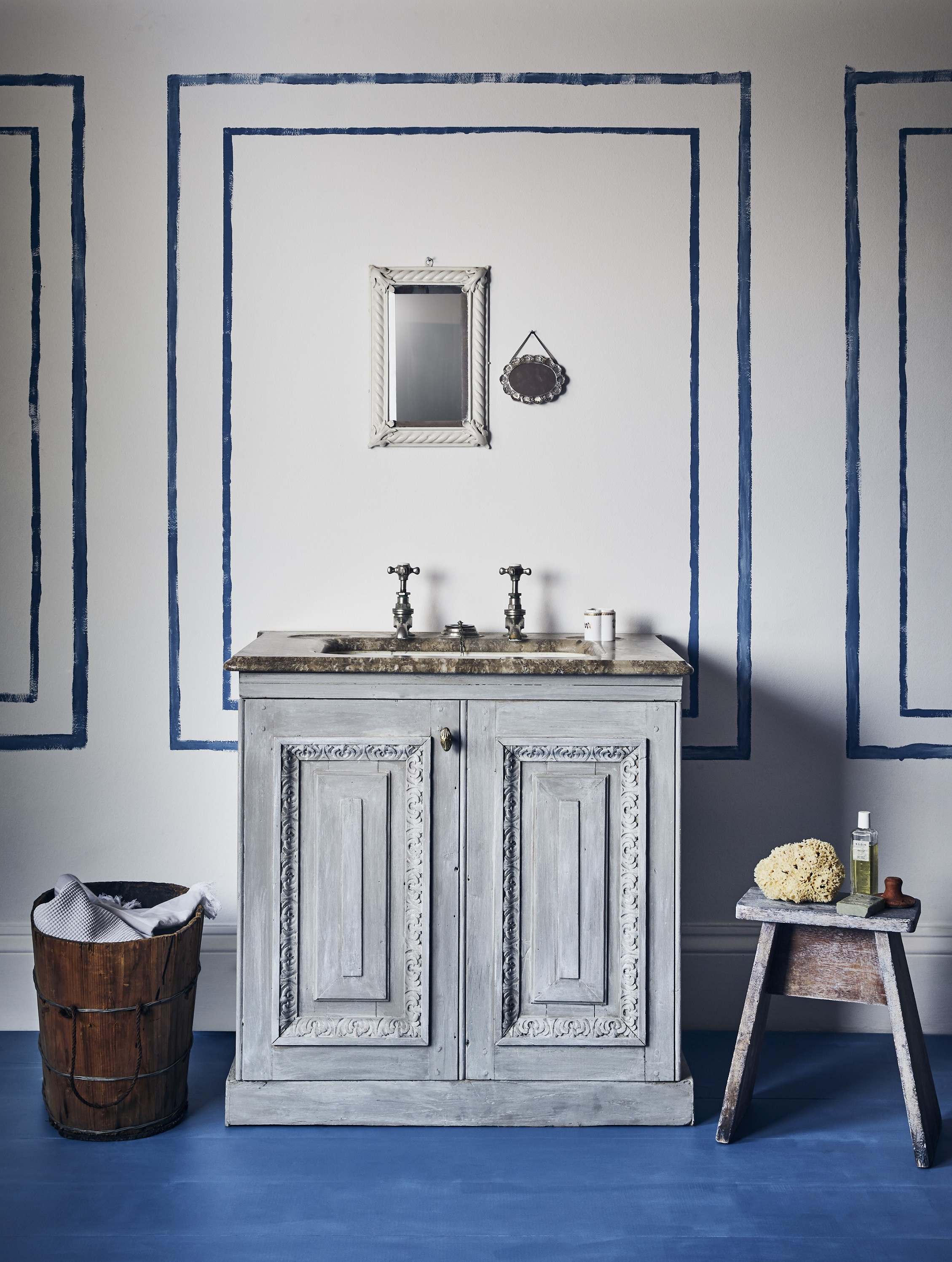
If you're not wanting to install wood in a bathroom, take notes from living room wall panelling ideas and experiment with paint.
A modern take on a traditional style has been used here surrounding the vanity unit. Casual dark blue paint rectangles mimic traditional panelling and beautifully contrast with the pale background, giving an easy character to an otherwise plain wall.
5. Choose a modern slatted wood cladding style
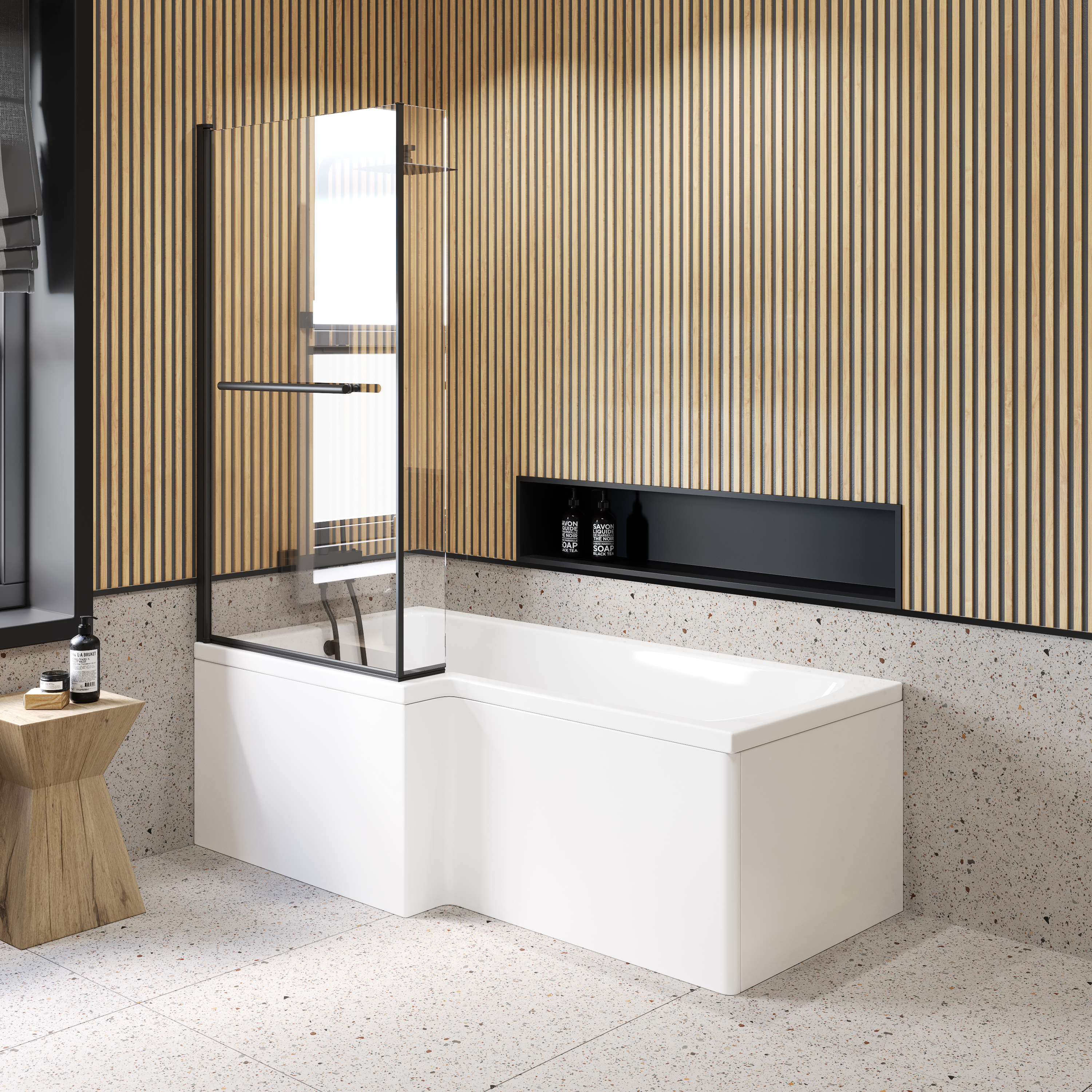
Slatted internal timber cladding is one of the most popular trends at the moment, so why not introduce this panelling style to a bathroom?
If you're attempting to recreate wall covering ideas like the one pictured, you will have to properly waterproof the wall and the timber so it will be suitable around a shower area. The result, however, is definitely worth the effort.
6. Install PVC or laminated shower panels
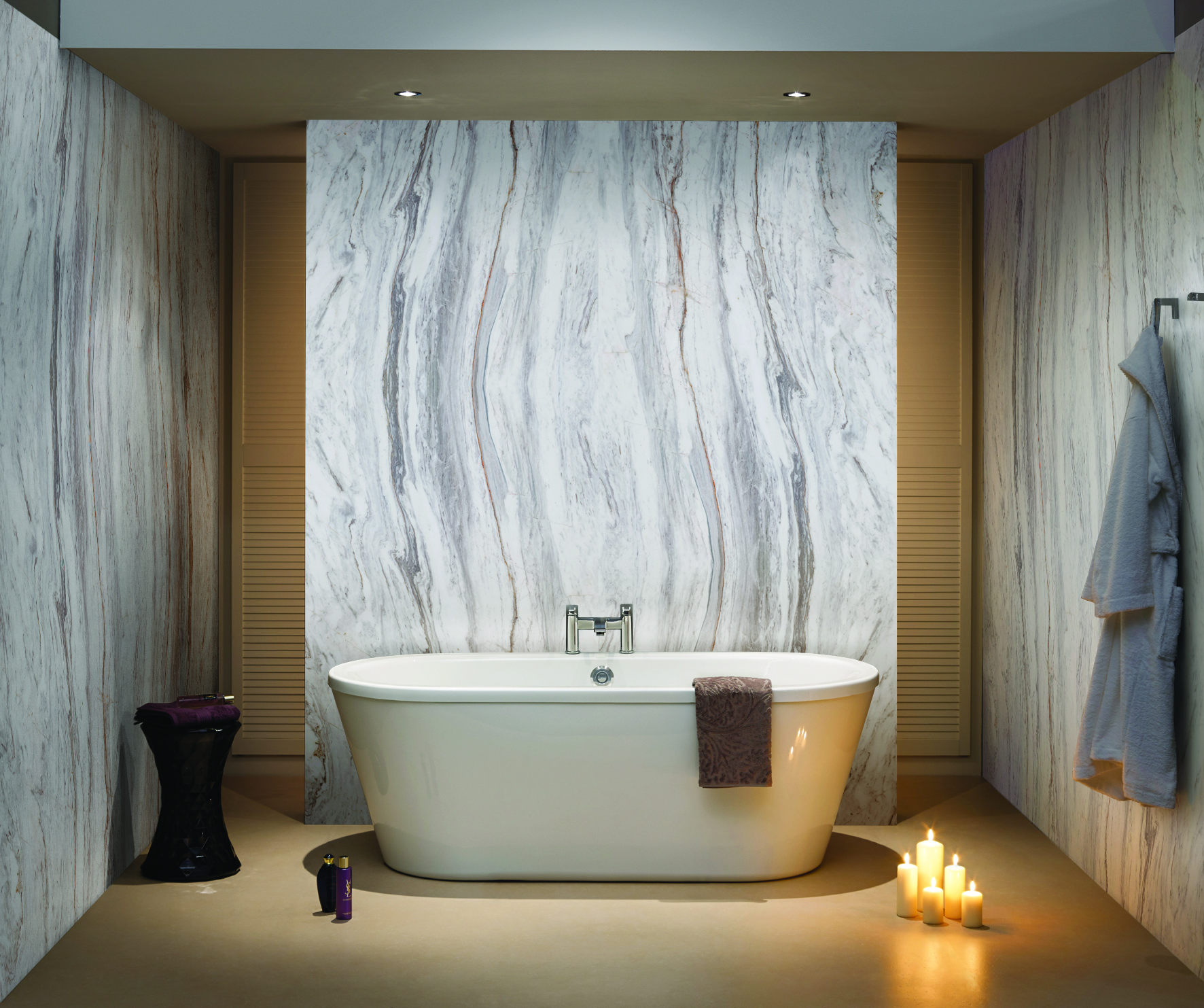
“Panels are the perfect alternative to ceramic tiles, providing a cost-effective, visually appealing solution that is quick to install and low-maintenance," says Helen Dennett, from Mermaid Panels. "You can easily fit panels directly to existing surfaces, including plasterboard and tiling, which means you don’t have to worry about preparing the wall beneath.
“In addition to finishes that replicate the subtle nuances of natural stone and oak, you can also showcase a tile-effect with panelling – offering the best of both worlds. They are carefully curated to align like tiles, but without any of the hassle or grouting, the clever designs ensure the pattern can continue seamlessly without interruption once the panels are fixed together."
7. Use tile to replicate wall panel styles
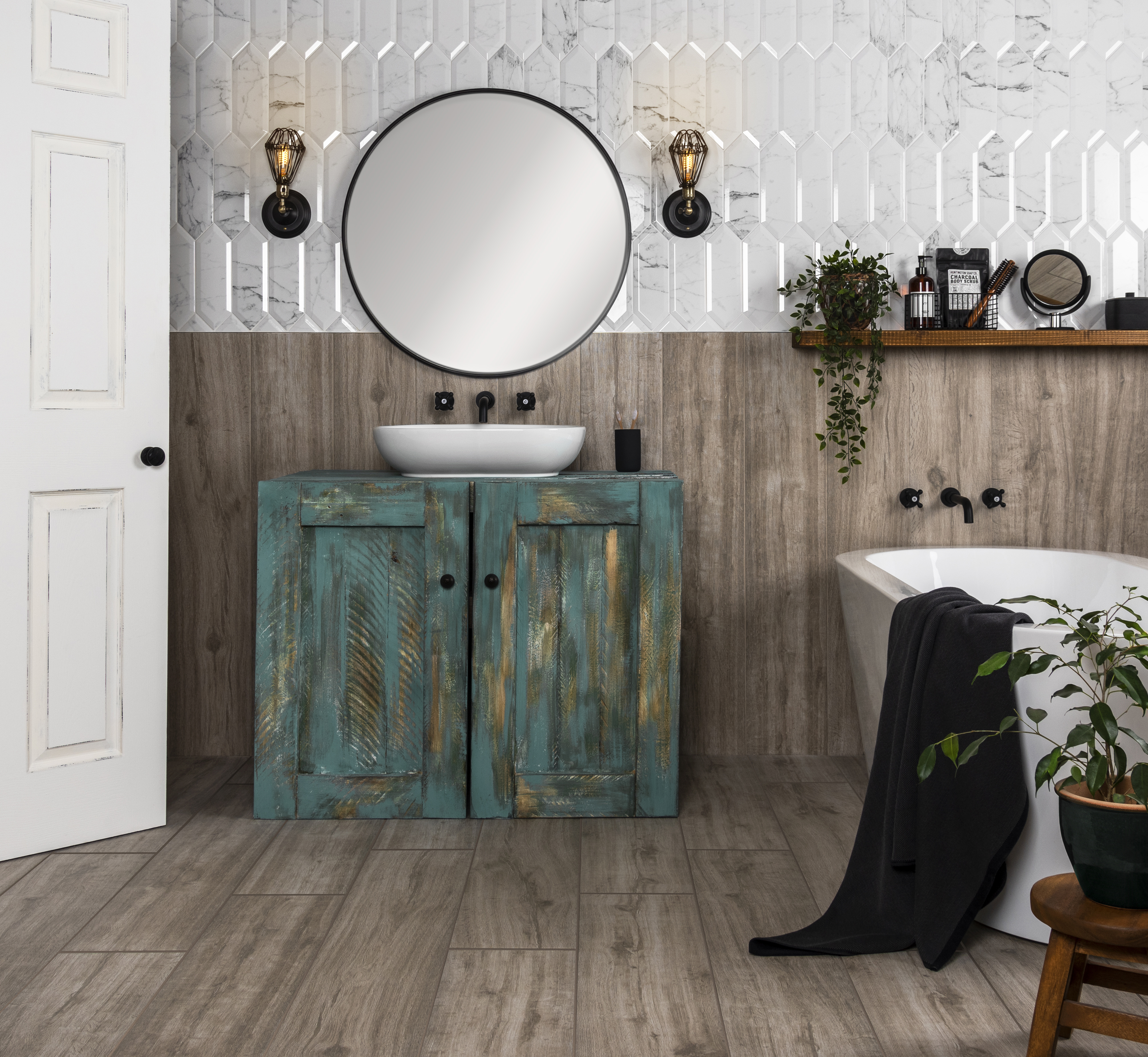
If you're not brave enough to install timber wall panelling in a wet area (and we wouldn't blame you!) wood-effect porcelain and ceramic tiles are a fantastic alternative.
Match them to your floor for a sleek and considered finish, but be sure to carefully line up the grout lines.
8. Use cladding as a feature wall in narrow bathroom
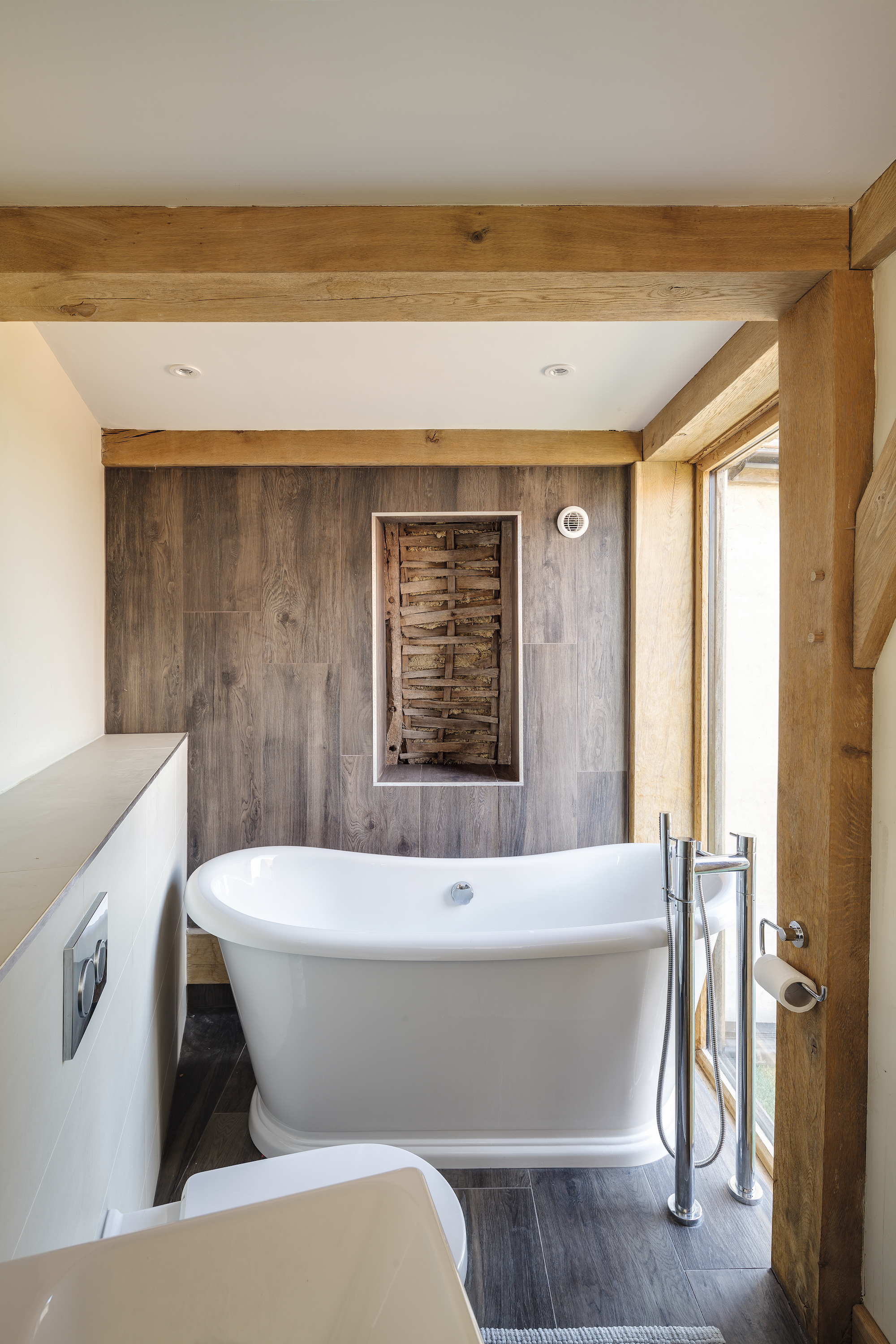
Using wall panelling is an ingenious small bathroom idea to create a focal point in a compact or narrow space.
This stunning tiny ensuite manages to balance simplicity with luxury, using the exposed oak frame structure to zone the space and tie in the dark wood feature wall at one end.
9. Add a pop of colour in a downstairs bathroom
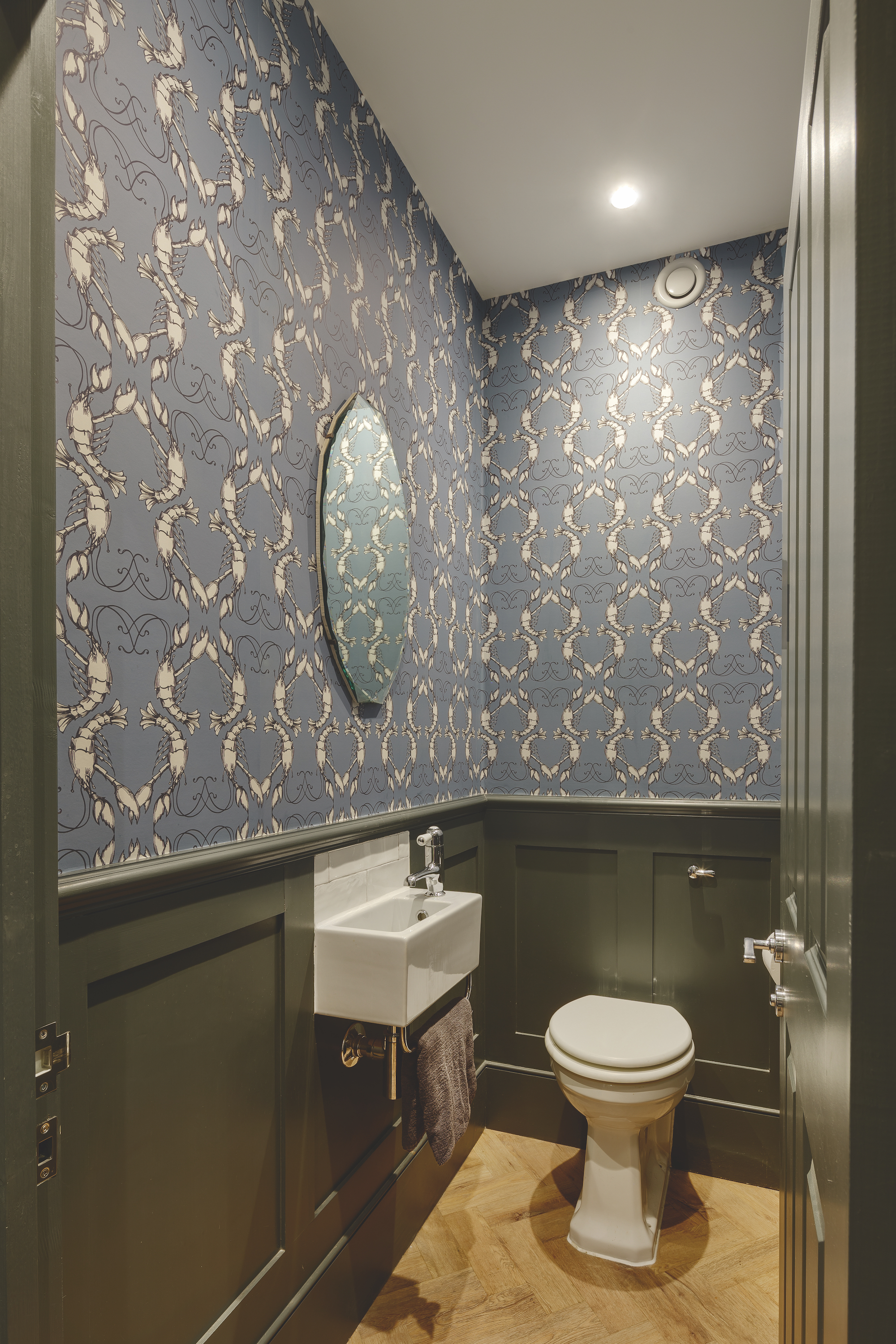
Find your favourite downstairs bathroom ideas and combine them with geometric wall panelling.
Everyone knows that the downstairs bathroom has become a place to show off style, colour and personality — even in the most pared-back home interiors. Use wall panelling to further create character in a small bathroom by adding texture and visual interest.
This downstairs toilet idea is also incredibly practical as they tend to be in frequent use during the day and when entertaining guests; panelling will protect the walls from damage and dents.
10. Go modern with plywood panelling
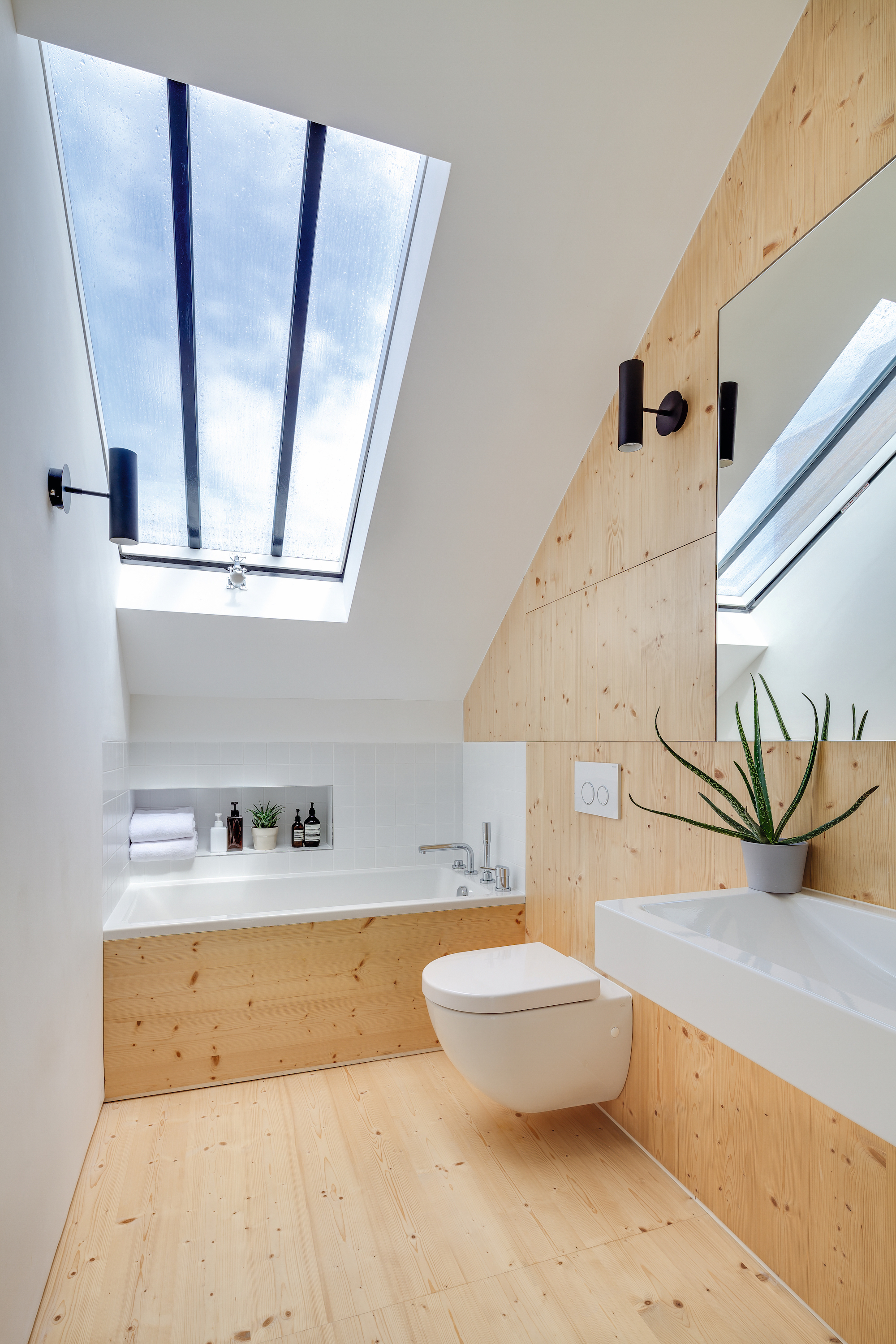
We've been seeing plywood feature in interior design for years as a (comparatively) cost-effective alternative to traditional plaster. This beautiful bathroom celebrates the material not just as wall panelling, but also surrounding the bath and as a flooring finish.
Pair with a simple white ceiling for a truly Scandi spa-like scheme and let the relaxation effects set in.
What kind of panelling can be used in a bathroom?
Generally, MDF panelling is often used for wood panelling as it is fairly inexpensive but any kind of wood can be used as long as you treat it and avoid it sitting in water. That said, it's important to understand that MDF will blow if it gets wet. Other woods won't blow but they will warp and expand and contract, something MDF won't do.
Whichever wood you chose, it is essential to treat it in a high-moisture environment. Some people like to prime the wood first with MDF primer, others like to paint it straight away. Either way, always make sure you paint all of the wood to avoid problems.
Jack Willis
"When using MDF, ideally opt for moisture-resistant MDF where possible," says experienced handyman Jack Willis. "Normal MDF can still be used but you need to make provisions to make sure it doesn't get wet. The plain face is usually pretty good with water but any edges and grooves can suck up moisture easily and if that happens it can blow.
"At a basic level, MDF is sawdust stuck together. Normal MDF glue will fail easily when exposed to water but moisture-resistant MDF uses a different glue that doesn't blow quite so easily."
Alternatives to wood include, PVC and laminate wall panels. These offer the opportunity to mimic other materials, such as stone, and other interesting designs in an easy-to-clean and contemporary way.

Jack is an experienced handyman covering a variety of household jobs. This includes carpentry, making bespoke cabinets in all rooms including kitchens and bathrooms as well as other woodwork.
Can you panel a whole bathroom?
You can definitely panel a whole bathroom — in fact this can create a spa-like style that instantly creates a relaxing sanctuary.
"Whether panels are being installed in a shower enclosure, across an entire wall or in a wet room, there is flexibility to create a standout design," says Mermaid Panel's Helen Dennett. "For multi-panel applications, a tongue and groove system can facilitate a join that remains watertight, so you can create a smooth, seamless and uniform finish – without the cost and time associated with buying and installing ceramic tiles. It’s important to opt for panels that are suitable for high-moisture environments."
Get the Homebuilding & Renovating Newsletter
Bring your dream home to life with expert advice, how to guides and design inspiration. Sign up for our newsletter and get two free tickets to a Homebuilding & Renovating Show near you.
Amy is an interiors and renovation journalist. She is the former Assistant Editor of Homebuilding & Renovating, where she worked between 2018 and 2023. She has also been an editor for Independent Advisor, where she looked after homes content, including topics such as solar panels.
She has an interest in sustainable building methods and always has her eye on the latest design ideas. Amy has also interviewed countless self builders, renovators and extenders about their experiences.
She has renovated a mid-century home, together with her partner, on a DIY basis, undertaking tasks from fitting a kitchen to laying flooring. She is currently embarking on an energy-efficient overhaul of a 1800s cottage in Somerset.

